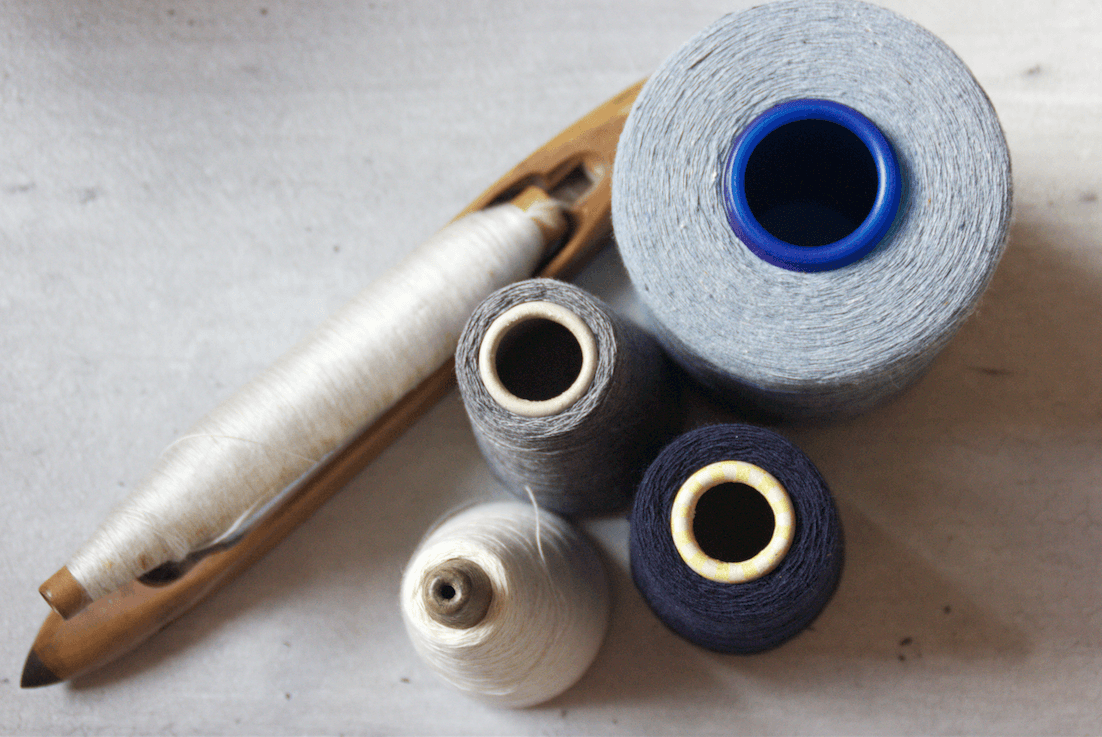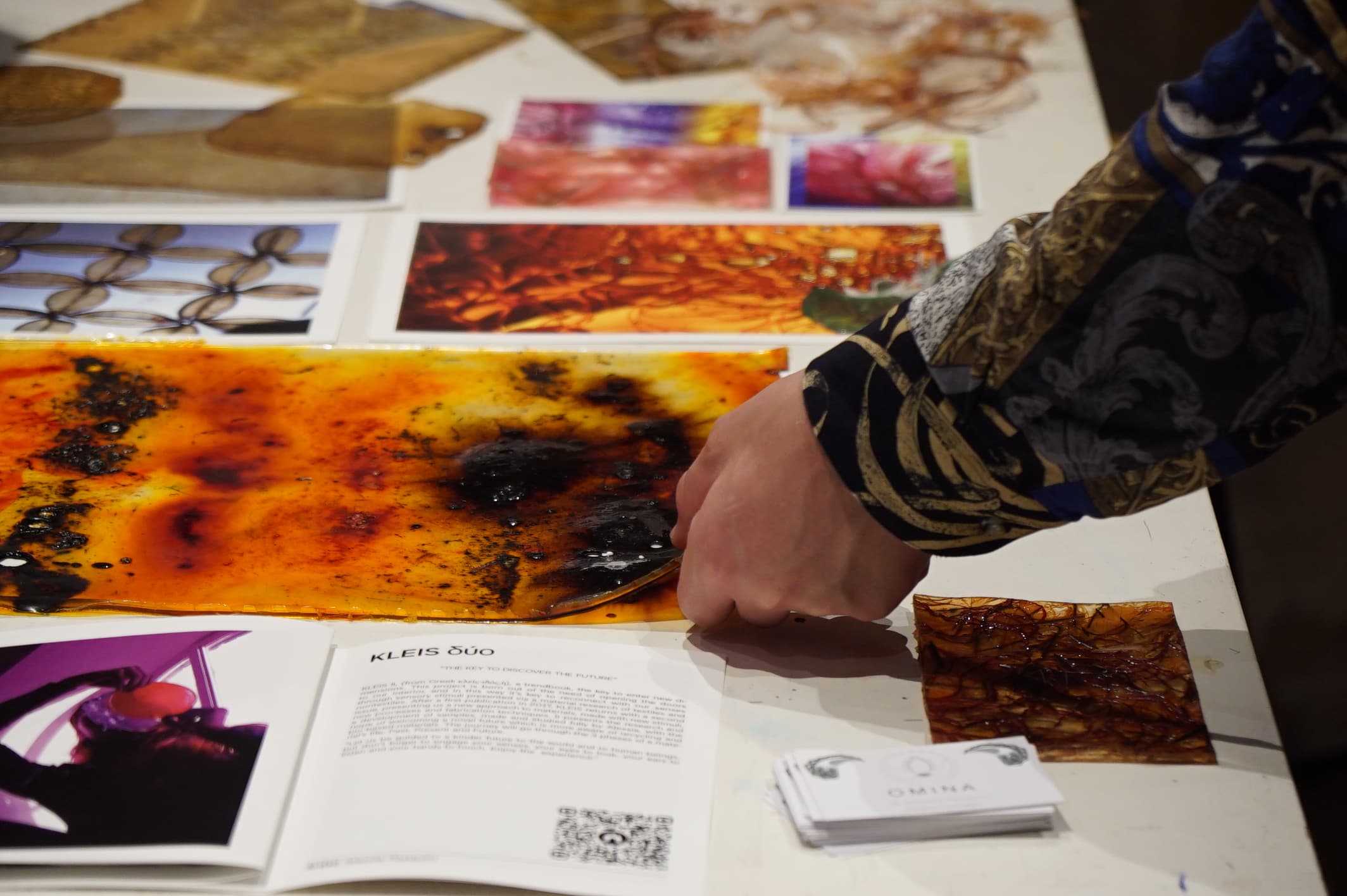One of our Textile Academy participants, print and pattern designer Laura Luchtman, made a recap of the second Textile Dialogue: "Working in this industry? On our conditions."
Looking for alternatives
On the 15th of November we gathered around in the TextileLab Amsterdam for the second Textile Dialogue. Different approaches to a more fair and sustainable industry were discussed. We listened to five inspiring guest speakers followed by a Q&A and discussion. More and more people working in the apparel and textile industry want something different than the compelling system of set seasons, fast pace collections, unconscious consumption, exploitation and waste. They are looking for other ways to work and collaborate, other ways to design, other ways to relate to our garments, other ways to build collections and other ways to make and produce. All aiming for an industry that is less polluting, less demanding and less unfair.
The guest speakers were: Roosmarie Ruigrok from Clean & Unique, Janne Kromhout from Min Design and Veerle Luiting (business developer sustainable fashion), Peter van Akkeren from Saint Basics and Annemieke Koster from Enschede Textielstad. Roosmarie thinks that people who want to change the industry focus too much on innovation of materials instead of focusing on people. She thinks change starts with (changing) people. The wages in low-wage countries where most of our clothes are produced are still shockingly low. She and Fashion Revolution think the best way we can contribute to big change is for every link in the fashion chain to become totally transparent.
We need transparancy
It starts by knowing where the resources and yarns come from, how the textiles are dyed, how the accessories and trimmings are made. And by providing insight in how prices are built. Fashion Buyers and Merchandisers often squeeze every penny out of suppliers (I've seen it happen numerous of times when I worked as an in-house designer) and large factory owners (who are often very rich) in their turn can't or refuse to pay their workers an honest wage. And don't be mistaken, it happens in every price segment.
When I worked as an in-house fashion designer, our swimwear for the wholesale market was manufactured in the same factory in China as brands as Victoria's Secret and Stella McCartney for example. They used the same fabric and quality, only adding some extra trimmings and more luxurious labels and packaging, probably paying only a few dollarcents more per item. In many ways luxury is an illusion. Janne Kromhout calls herself a designer and maker of clothes. She intentionally uses the term clothes instead of fashion. Janne thinks we lost the feeling with how clothes are made; the technique, time and craftsmanship it takes to make clothing. She is inspired by Jonathan Chapman and agrees with him that we need emotionally durable design.
We need to involve users to create or re-establish a feeling of value of clothing. She also thinks mending clothes is a way to increase the value of clothes; it can make them more unique, pretty, durable and valuable. Janne says that we are raised with the idea that we constantly have to buy stuff in order to keep the economy on a healthy level. We are feeded by marketeers into buying things that are wasteful, which is also described in the 1960's book The Waste Makers by Vance Packard. The world doesn't need more stuff, we have enough food and clothes to feed and clothe everyone, it is just not rightfully distributed.
Veerle Luiting believes that we need to focus on the outer circle of the circular economy diagram: recycling. When we recycle leftover collections and discarded clothes, we don't need to use biological or chemical resources to spin new yarns. She thinks that the world produced enough clothing to last us a lifetime if we recycle them. Peter Akkerman is the CEO of Saint Basics, a Dutch sustainable basic underwear brand that is the greenest Dutch fashion brand according to Rank a Brand. Their products are made form Tencel and organic cotton. He calls Saint Basics a next generation brand. He believes in fair wages, collaboration, cross-marketing and transparency. According to Peter, green alone doesn’t sell, you need to have a cool product.
"Green doesn’t sell"
I applaud their efforts and the fact that they are front-runners among the Dutch fashion brands. But still I wanted to ask them what they can do even better. All their products contain 5% elastane, is the elastane eco friendly? What are the elastic waistbands made of? How are the textiles dyed or printed? Is the transfer printed care label eco friendly? How are the products packaged? According to fashion regulations, care labels need to specify the main fibre content of which a product is made, but that still doesn’t say a lot about the product as a whole. I’d recommend them to specify as much of the production process and product in order to keep that front runner position. Perhaps even specify the price building like Bellamy Gallery does. And I’m going to do the same for my silk scarves collection.
Produce local, sell local
Annemieke Koster started a small weaving factory in the Dutch city of Enschede. Until the 70's Enschede was a big player in the European textile industry. But then the industry moved to low-wage countries, leaving the city with high unemployment rates and dying knowledge. She wants to reinstall the craftsmanship of weaving fabrics and prove that production can be done locally. She does struggle with the fact that most fashion brands are not looking to develop their own fabrics, it is hard to find recycled yarns and it's hard to find people who are willing to learn the craft.
All change starts small
The conclusion of the evening is that the issues on both the industry side, as the consumer side are too big to grasp. For me, the Textile Dialogue raised more questions than answers. The comforting thought is that all change starts small. So all initiatives of brands, designers, manufacturers, artists, activists, chemists, scientists, politicians, marketers, architects and teachers are valuable. The more droplets fall into the water, the more waves we create.


